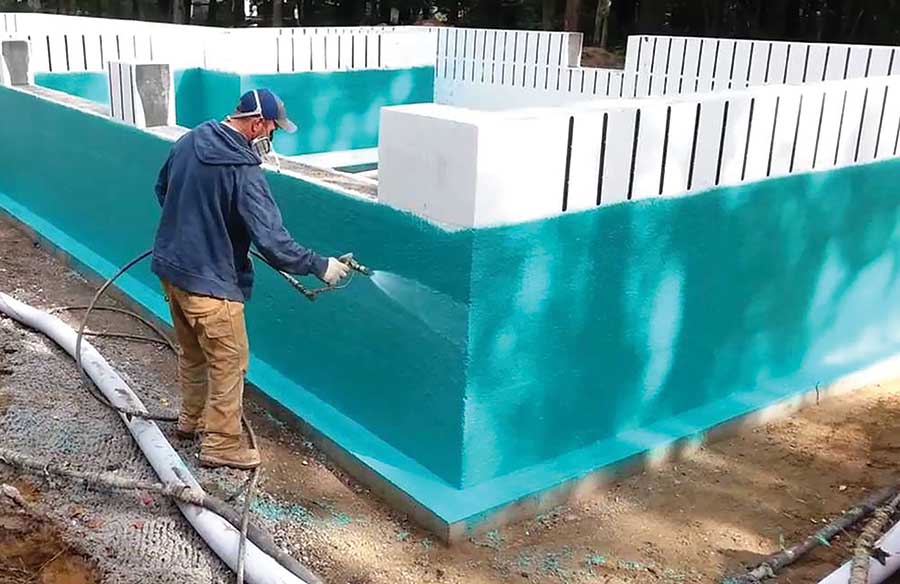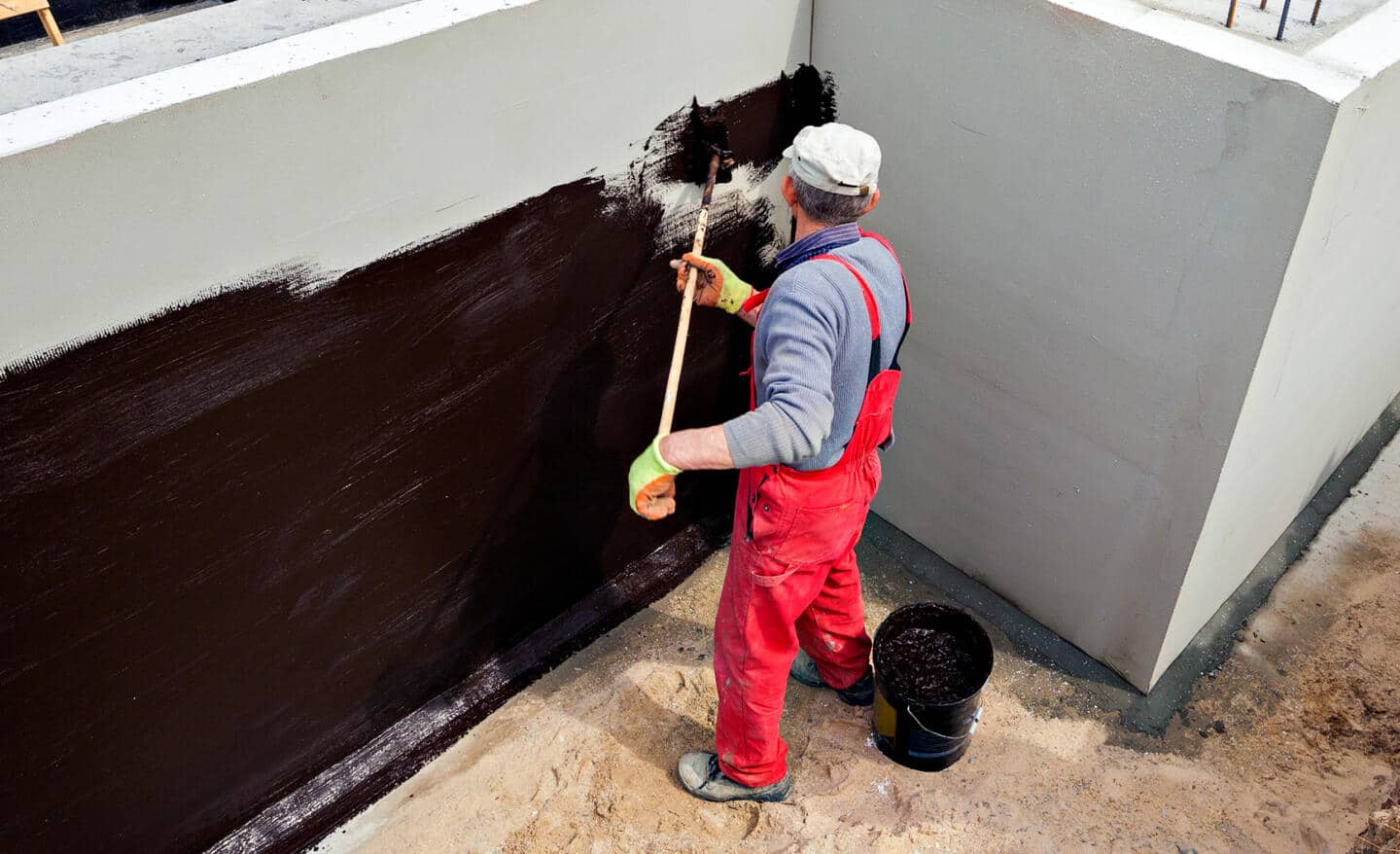Beginner’s Guide to French drain installation Omaha: Planning Your First Install
Sorts of Waterproofing: Checking Out the Various Approaches and Their Applications
Waterproofing is an essential aspect of construction and maintenance. It safeguards frameworks from the harmful results of water damages. There are a number of approaches readily available, each with its special applications and benefits. From membrane systems to cementitious solutions, understanding these alternatives is vital for efficient execution. The selection of waterproofing method can substantially influence sturdiness and long life. Exploring these numerous techniques reveals their distinct advantages and potential obstacles, motivating more factor to consider of excellent options.
Membrane Layer Waterproofing Systems
Membrane waterproofing systems work as a crucial obstacle versus water invasion in numerous structures. These systems usually consist of thin sheets made from products like rubber, thermoplastic, or asphalt, which are related to surfaces to avoid moisture penetration. They can be mounted above or listed below quality and are especially reliable in areas prone to high water direct exposure, such as cellars, roofings, and foundations.The installation process includes cleansing the substratum, using adhesives or primers, and exactly suitable the membrane layer to assure total coverage. Membrane layer systems can be either fully stuck, mechanically affixed, or laid loose, depending upon the certain demands of the project. They provide toughness and versatility, fitting structural movements without endangering their waterproofing abilities. Furthermore, these systems can be reinforced with extra layers for enhanced protection. Eventually, membrane waterproofing systems are necessary for securing frameworks versus water damage and keeping lasting stability.
Liquid-Applied Waterproofing Coatings
Liquid-applied waterproofing finishings give a functional service for protecting surfaces from water infiltration - Sump pump discharge drainage Omaha. These finishes contain liquid materials that, when applied, form a smooth, adaptable membrane layer. Their adaptability enables application on various substrates, consisting of concrete, steel, and wood. The coverings can be utilized in varied environments, from domestic to industrial settings, making them ideal for roof coverings, foundations, and below-grade structures.One substantial benefit of liquid-applied coverings is their capability to adapt irregular shapes and pass through splits, developing a robust obstacle versus dampness. They typically display excellent bond buildings and resistance to UV radiation, ensuring long life and sturdiness. Furthermore, the application procedure is normally straightforward, permitting fast setup and reduced labor prices. This approach additionally lessens the threat of water pooling, as the continuous layer efficiently routes water far from at risk locations. Generally, liquid-applied waterproofing coatings are a reliable choice for detailed water security
Cementitious Waterproofing Solutions

Cementitious waterproofing solutions provide a robust choice for structures calling for dependable dampness security. These systems primarily use a blend of concrete, sand, and chemical ingredients to create a water resistant obstacle. They are typically related to surfaces such as concrete walls, structures, and floors, supplying a long lasting, resilient protection versus water intrusion.One of the crucial benefits of cementitious waterproofing is its ease of application; it can be used making use of a brush, roller, or spray, making it suitable for different task dimensions. Furthermore, this method works with lots of surface areas and can typically be utilized together with other waterproofing techniques.Cementitious solutions are specifically reliable in atmospheres where water direct exposure is a concern, such as basements or below-grade frameworks. Their exceptional attachment residential or commercial properties assure that they bond well with substrates, supplying a strong and Learn More Here nonporous layer versus wetness infiltration.
Bentonite Waterproofing
Bentonite waterproofing is an extremely effective method that uses sodium bentonite clay to develop a natural barrier versus water. This method makes use of the special homes link of bentonite, which broadens upon contact with water, securing any kind of possible leakages and avoiding moisture seepage. It is commonly utilized in various applications, including structure walls, passages, and retaining walls, where water resistance is essential.Bentonite can be applied in several forms, such as panels or coverings, providing flexibility in installment. Its ability to self-seal makes it an appealing option for locations based on changing dirt or ever-changing water degrees. Furthermore, bentonite waterproofing is eco-friendly, as it is an all-natural material that does not present unsafe chemicals into the surroundings.
Drain and External Waterproofing Solutions
Reliable waterproofing usually involves a mix of techniques, consisting of drainage and external systems. Drain systems, such as French drains and sump pumps, are made to redirect water away from structures, reducing hydrostatic pressure versus structures. These systems are crucial in protecting against water buildup that can lead to architectural damage and mold growth.External waterproofing, on you can find out more the other hand, involves applying safety obstacles to the structure's outside. Methods such as the installment of water-proof membrane layers, layers, or sealants can assist prevent water infiltration. This technique not only safeguards the foundation yet likewise improves the general sturdiness of the structure.Together, drainage and outside waterproofing systems develop an extensive remedy to handle water successfully. By carrying out these techniques, home proprietors can safeguard their financial investments against the destructive impacts of wetness, making certain long-term security and security for their buildings.
Often Asked Concerns
How Do I Select the Right Waterproofing Approach for My Job?
Selecting the ideal waterproofing approach relies on factors such as project type, ecological problems, budget, and preferred durability. Assessing these facets enables informed decisions tailored to particular demands and requirements.

Can Waterproofing Be Applied in Cold Climate Issues?
Waterproofing can be applied in cold weather conditions, yet it requires certain materials and strategies. Cold temperature levels may affect healing times and attachment, requiring cautious choice of items created for low-temperature application.
What Are the Typical Indicators of Waterproofing Failing?
Usual indications of waterproofing failing consist of visible water spots, peeling off paint, wet smells, mold growth, and splits in wall surfaces or foundations. Landscape drainage Omaha. These indicators suggest that wetness is penetrating the obstacle, endangering its effectiveness
How Much Time Does Waterproofing Last Before Requiring Maintenance?
The longevity of waterproofing differs, normally lasting between 5 to ten years. Factors such as material top quality, environmental conditions, and maintenance techniques affect its toughness, requiring routine examinations to assure effective security against water intrusion.
Are There Eco-Friendly Waterproofing Options Available?
The concern of environmentally friendly waterproofing options exposes a growing rate of interest in sustainable materials (Sump pump discharge drainage Omaha). Different natural materials, such as plant-based sealers and recycled products, use effective solutions while reducing environmental effect, interesting ecologically conscious customers